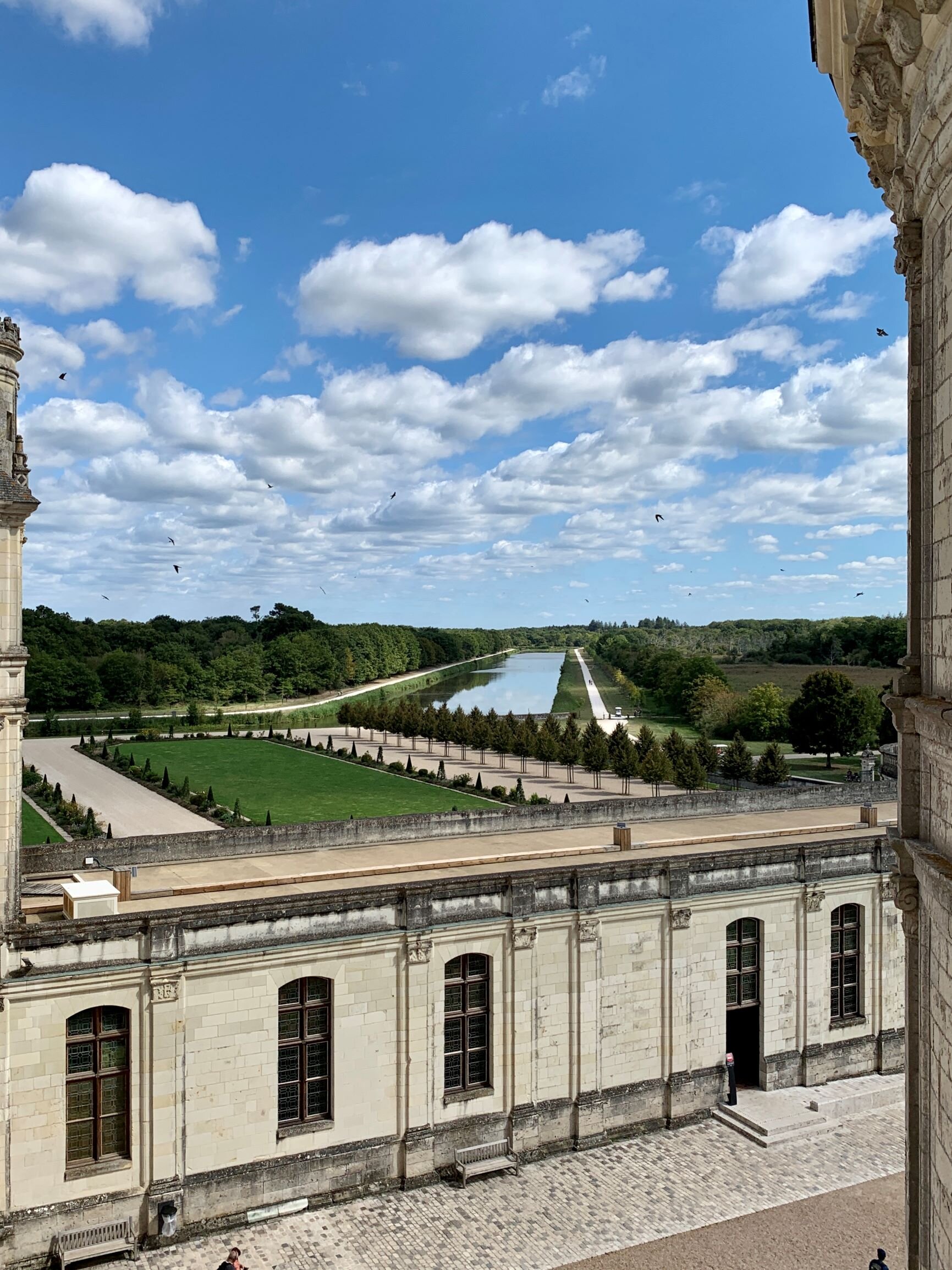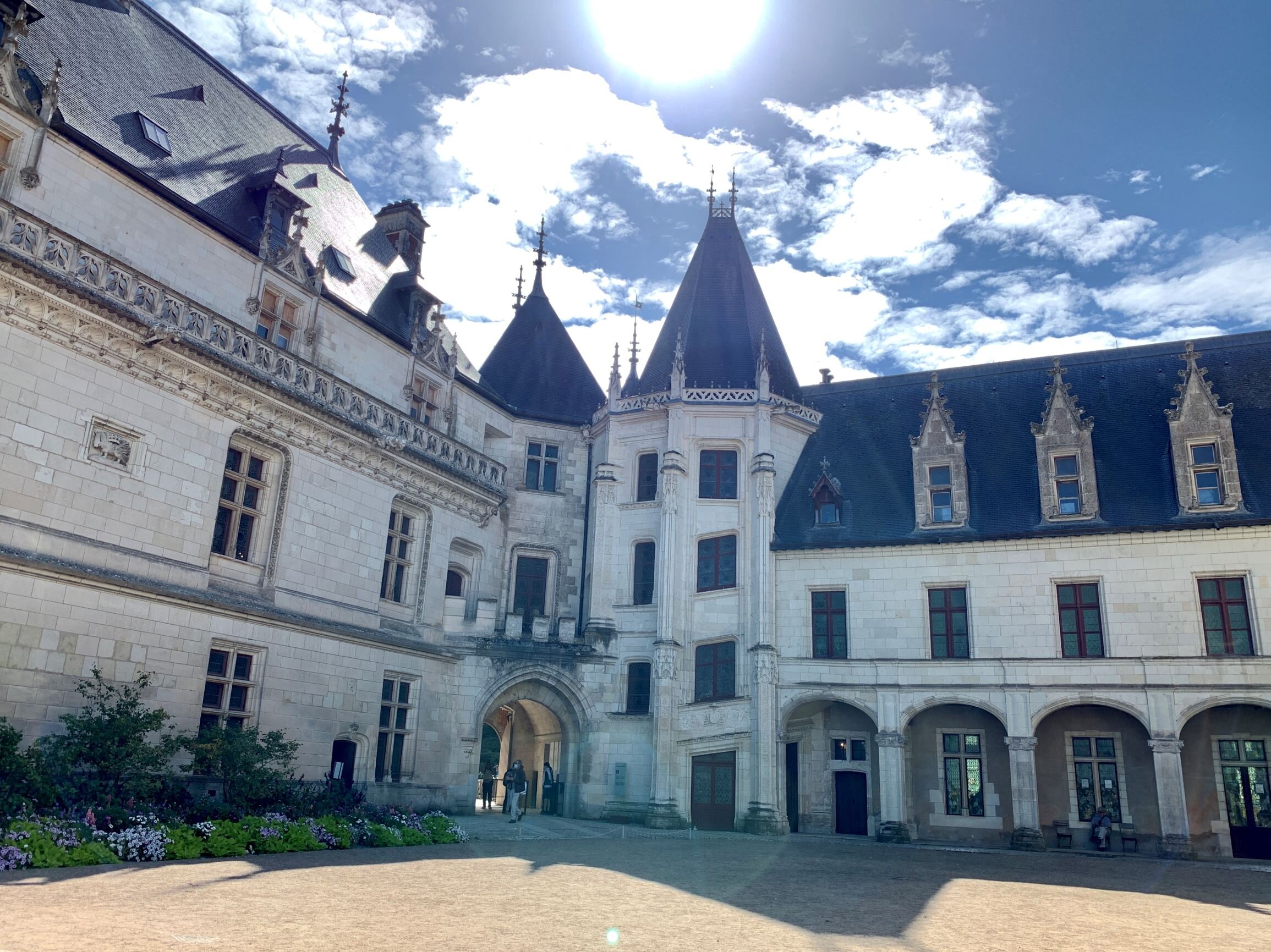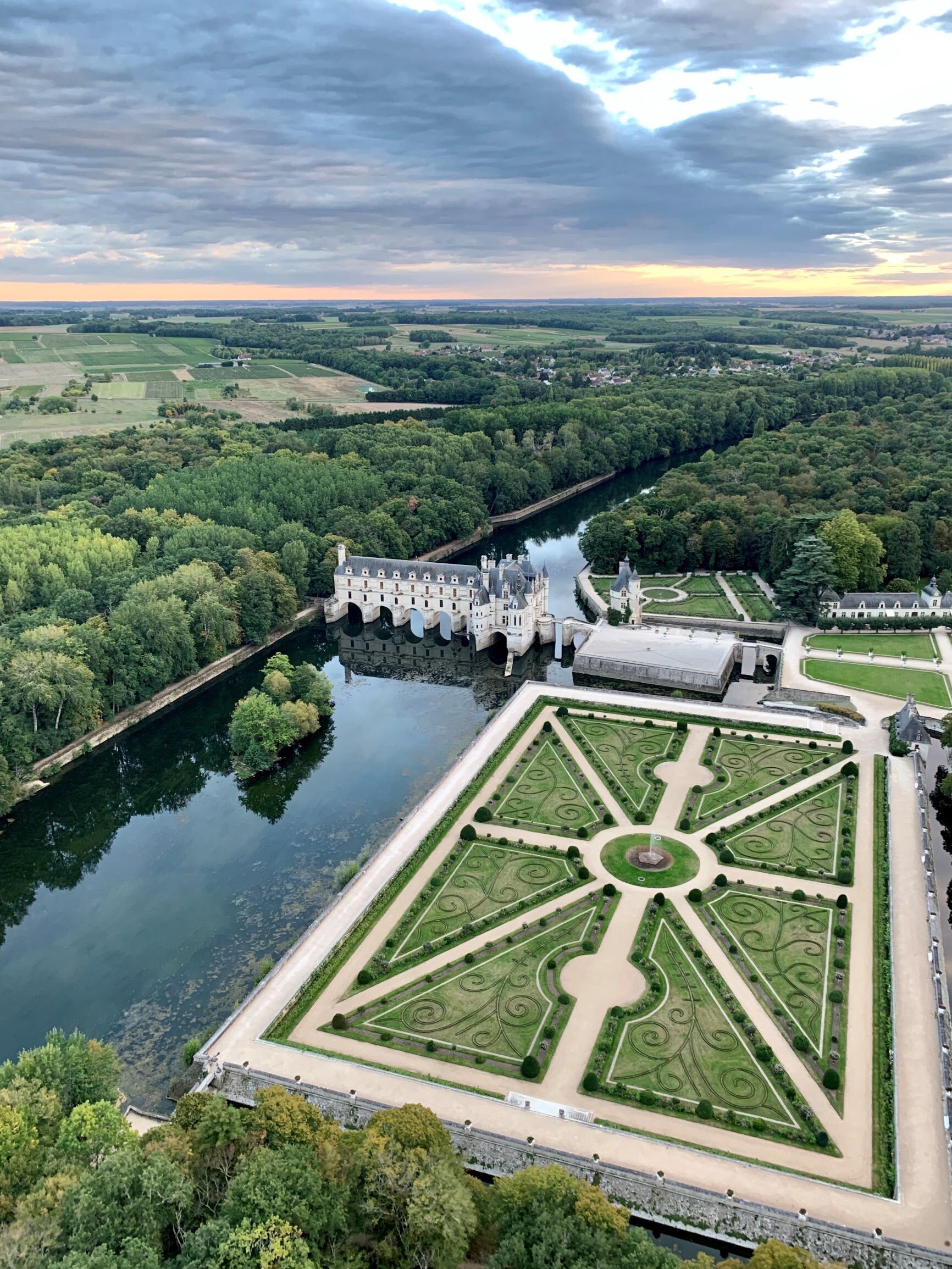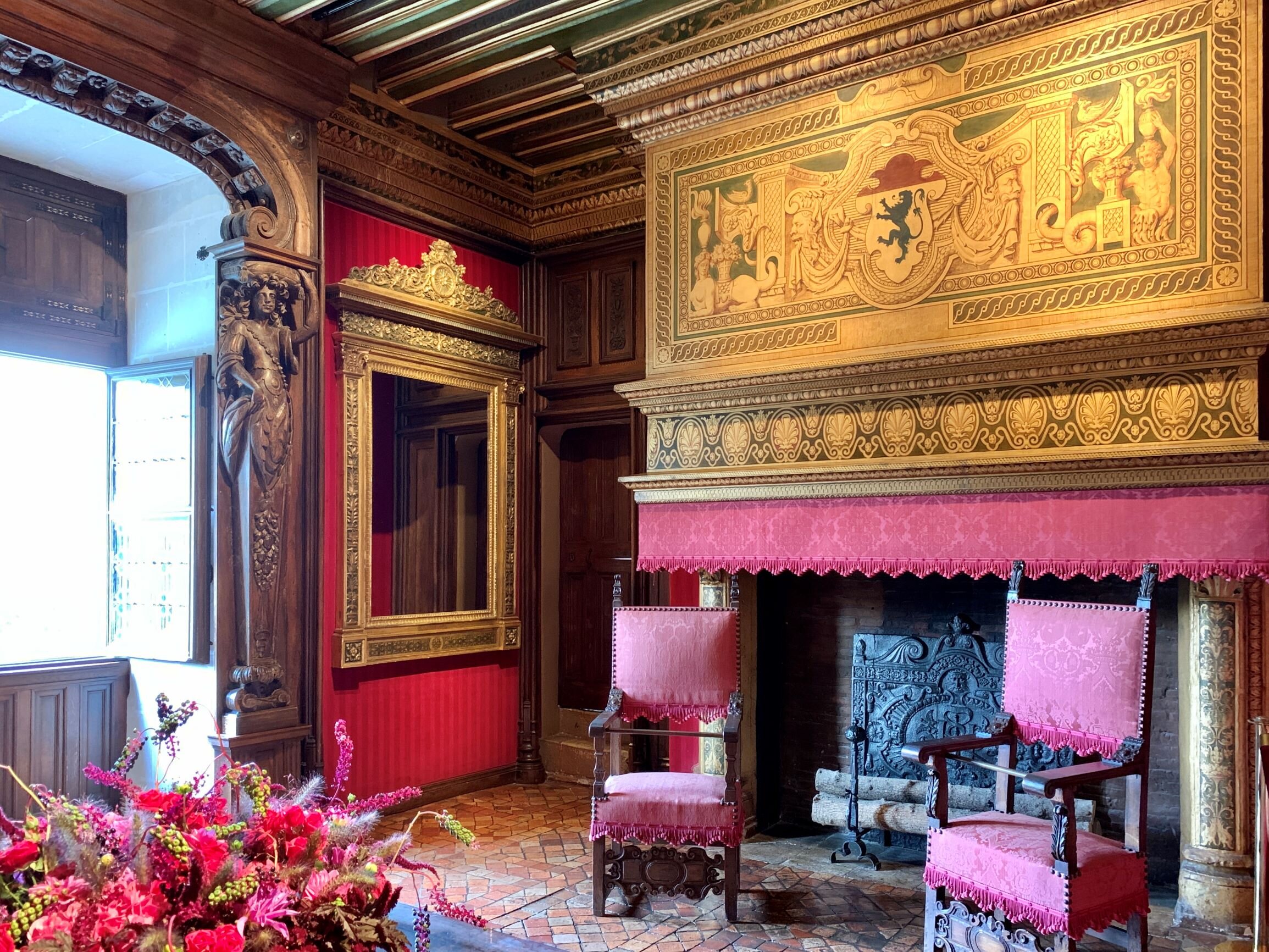Loire Valley Castles: The Best Châteaux for Beauty
A view of the castle from the gardens at Cheverny. Cheverny, France. September 13, 2020.
With so many castles in the Loire Valley of France, how do you choose which ones to see—or even where to start?
When it comes to macro categories of Loire Valley castles, you’ll find two: Castles to see for their beauty and castles to see for their history.
Granted, these categories overlap. You’ll find many historical castles beautiful and many beautiful castles with deep wells of history.
However, what we today consider the most beautiful castles often stayed inhabited until recently or even have inhabitants today. And when people live in a space, they update it with the changing times—or, at a minimum, keep it restored and habitable. In the process, these castles have shed much of what we would consider of historical interest over the course of their ongoing evolution and renovation, while becoming ever more gloriously beautiful with age and attention.
In contrast, the castles with the most evident historical details have crumbled away much of what we would today consider beauty and remain mostly unrestored or restored with an eye to historical authenticity. These châteaux may not have perfectly preserved turrets and lush Renaissance gardens, but they do have drawbridges and dungeons.
If you have a trip to the Loire Valley planned or in the planning, I’d recommend you try to see a mix of beauty and history in your castles. Toward that end, I’ve written this guide to the best Loire Valley castles to see for their beauty and another guide covering the best Loire Valley castles to see for French history. Also, you can read my recommendations for Loire Valley castle prioritization, which includes my rundown of the top three castles to see in the Loire Valley if you have very limited time for your visit.
And if you don’t even know where to begin with the logistics of a trip to the Loire Valley, I’ve written a comprehensive how-to guide.
As for this article on the Loire Valley’s best castles for beauty, let’s get started. In alphabetical order, check out the top Loire Valley châteaux to see if you want to soak in all the French-château elegance:
Château Royal d’Amboise
The Château Royal d’Amboise has a deep well of history behind it, though not much remains for the present visitor to see. The castle has two historical buildings still standing and open for tourist visits: a lodge (partly Gothic and partly Renaissance in design) and the Chapelle St-Hubert, in the Gothic style.
Inside the chapel, you’ll find the probable remains of Leonardo da Vinci. (I say “probable,” because he was moved to this spot from his original burial place; they had to make an educated guess about which remains were his.)
The elegant castle grounds have a lovely view over the Loire River. Also, if you visit on a Sunday, you can enjoy the market in the town of Amboise as well.
Château d’Azay-le-Rideau
Though it has well-arranged interiors worth a view, you’ll find the outside of the Château d’Azay-le-Rideau positively stunning.
Though the castle has little of notable history, its location is positively idyllic. Though I can’t imagine living in a castle, this one almost (almost) felt livable to me in its accommodations, elegance, and meandering and peaceful grounds.
I could almost watch this video I captured of the castle’s meandering stream and moat on a loop for a practice in peace and meditation:
Château de Chambord
François I built the Château de Chambord as a showpiece of his power and ambition. As no one ever fully inhabited it, the castle has limited actual history.
(Why did no one ever live there, you ask? It took decades to build, Francois I only managed to spend a few dozen days in residence during its construction, and after the king’s death a few nobles lived in a mere nook or cranny of it for a few years here and there.)
History—or lack thereof—aside, I can’t say I’ve ever seen a castle anything like Chambord in design. Its overall concept, decoration, and execution is high concept for the time and even high concept for today’s thinking (if you go by Disney castles as “today’s thinking” on castle design). Don’t miss the informational video tucked into a side room just after you enter the castle for helpful context on Chambord’s conception.
Chambord’s beautiful interior staircase, rooftop promenade, and Mediterranean influence overflowing with decorative details will delight your eye.
Château de Chaumont-sur-Loire
The castle feels like a jumbled, disorganized antique shop; when it comes to the Château de Chaumont-sur-Loire, the grounds hold the real beauty and interest.
The castle’s current keepers have decided to maintain the spirit of the last owners’ love for modern art through inviting landscape architects, gardeners, and artists to create garden experiences. We ended up spending most of our visit outdoors rather than inside the castle proper.
In addition to the modern-art infused gardens, you’ll find the stables worth a visit. The last private owners of the Château de Chaumont-sur-Loire had the finest stables of their time, replete with electricity, and kept an astounding number of motor cars at their disposal and for their entertainment. (To own five cars today represents a shocking amount of wealth in a family; imagine owning five cars in the late 19th century.)
Château de Chenonceau
Of all the castles I present in this Loire Valley châteaux series, the Château de Chenonceau is the only one that features on my list of castles to see for beauty and castles to see for history. You can see it from either angle (or both angles!), depending upon your perspective.
The gallery over the Cher River, once used for feasts and banquets, is unparalleled in its beauty. The gallery has played an important historical role as well: In addition to serving as a military hospital during the first world war, it served as an escape route during World War II for resistance fighters, Jews, and other refugees fleeing German-occupied France; the Cher River formed the natural “frontier” between the two zones, and the gallery spans it.
The best views of the overall layout of the castle and its grounds came from an overhead hot-air balloon flight that we had the good fortune to take and that had the good luck of finding winds headed in that direction—I made sure to take photos and video to share, of course.
People call the Château de Chenonceau the “ladies’ castle” for the outsized role a series of women had in its history and its development over the years; thanks to their ingenuity and hard work, the castle attained its gorgeousness and survived the centuries.
Château de Cheverny
Fans of comic books—especially French and Belgian fans of comic books—might recognize the Château de Cheverny as the one regularly featured in the TinTin comics. (Nothing looked familiar to me about either of the castle’s two facades—each in a different architectural style—but Arnaud recognized it immediately.)
The castle has benefited from continuous occupation by the same family, which still lives there today. Unlike nearly every other castle you can visit in the Loire Valley, monied hands have kept it in tip-top shape and operation, with many of its luxurious and historical accoutrements intact and not recreated “in the style of the time.” The castle has lovely gardens and an entire quarter (and staff) devoted to the family’s pack of hunting dogs—which you can see lounging around their facility (also known as an utterly massive doghouse).
Though the castle doesn’t have an incredible amount of historic interest, if you’ve come to the Loire Valley to see beautiful château, you shouldn’t miss Cheverny.
Château de Saumur
True confession: We only stopped by and marched across a brief span of landscape to gaze at the Château de Saumur from afar when driving through town.
Even if you only have a few moments, you’ll find a quick stop and a look-see worth the time; the castle is picturesque to the point of Disney-esque, with its hilltop location, ramparts, and golden fleur-de-lys weathervane.
Château d’Ussé
Though perfectly worth a full visit if you have the time to spend for the tour, the Château d’Ussé exterior truly draws the eye and the imagination—as it did that of Charles Perrault, the author of “Sleeping Beauty.” Indeed, this is the castle that inspired the fairy tale (known as “La Belle au Bois Dormant” in French).
If you only have enough time to pass by Ussé to feast your eyes on the castle’s elegance, you should.
Though it has a few tidbits of interesting history to show and to tell, even the castle realizes that people come for the fairy tale—and so it has reconstructed scenes from the story in the older part of the château.
Château de Villandry
The Château de Villandry itself won’t stun you, but the gardens sure will—and you need a ticket of entry to see the gardens and to get a vantage point on the gardens from the upper floor windows of the castle.
Each of the castle’s immense gardens has a different theme, which the guidebook will detail for you and which you can best grasp visually from the windows on the castle’s second floor, which look out over the landscape.
Though the gardens with ornamental flowers telling stories of sun, water, and love will impress, the castle has turned its kitchen garden into a work of incredible art, arranging vegetables and fruits into ornamental, color-coordinated geometrical designs.
Loire Valley Châteaux = Endless and Timeless Elegance
In addition to this article on castles for beauty, my post on the best castles to visit to experience and learn about French history, and my how-to for prioritizing the Loire Valley castles, you can dig into my how-to guide for planning a Loire Valley trip. You can even get a primer on the history of the region by reading my article about why the Loire Valley has so many castles in the first place.
And if you’d like ideas for what else you can do to mix your castle visits with other sights and activities, I’ve written up a list of other things to do in the Loire Valley, too.
Still want more Loire Valley perspectives? Click here for my full set of articles on the Loire Valley in France.












































